Bunker Ranch Family
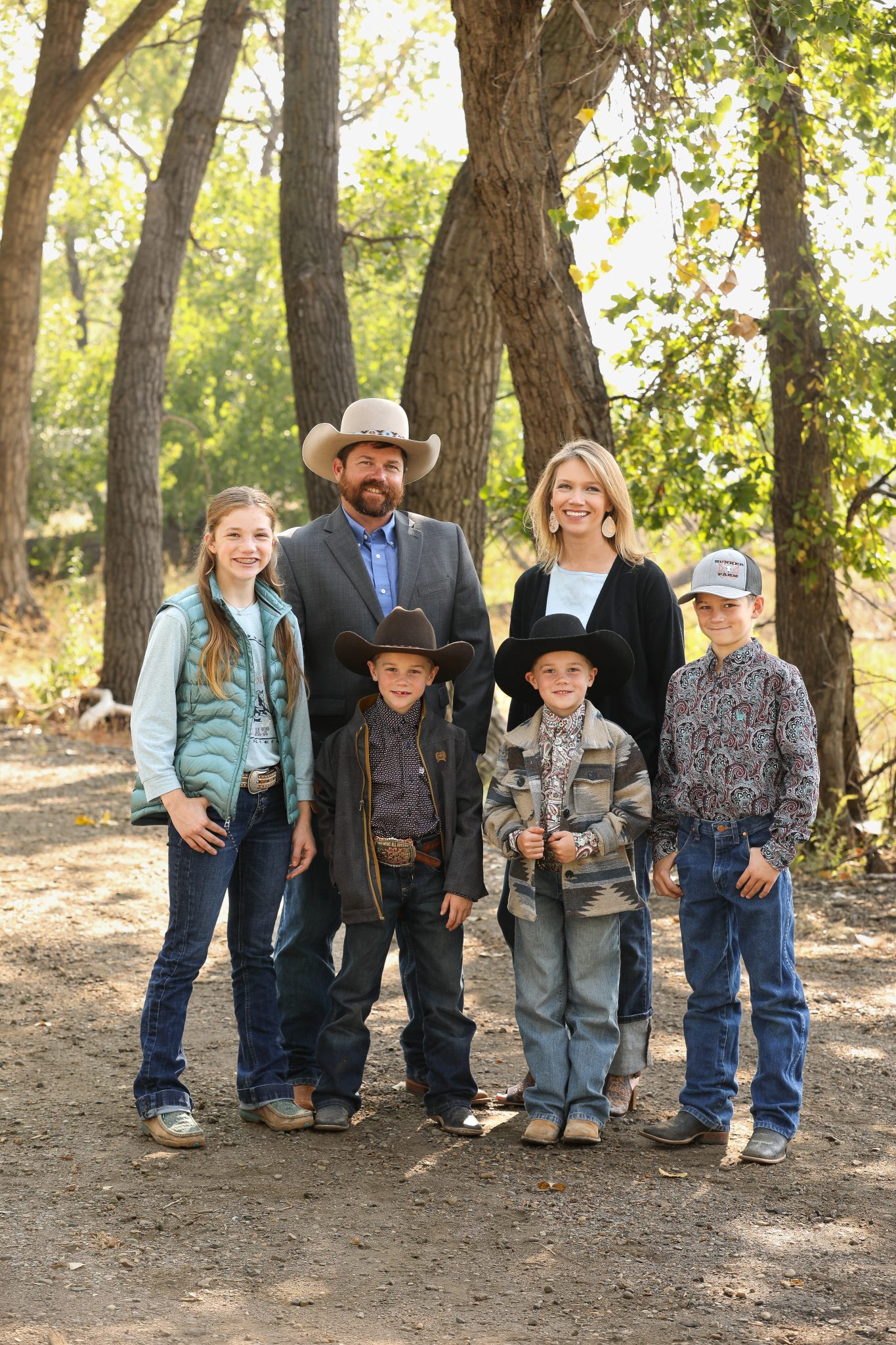
By Lura Roti for South Dakota Farmers Union
Photography by Ashley Korzan, Korzan Customs Photography
Growing up, Amber (Hammerbeck) Bunker dreamed of becoming a plant geneticist.
“I remember riding in the car with my dad and asking him why there was grass on one side of the road and sagebrush on the other side,” Amber recalled. “He said, ‘girl, you have the right question, but I don’t have the answer.’ I thought I would become the next Norman Borlaug.’”
Borlaug was a Nobel Prize winner known as the father of the Green Revolution.
To find the answers and pursue her dream, Amber majored in agronomy at South Dakota State University.
It was in a genetics class at SDSU that she met Bryan Bunker, a ranch kid from Reliance pursuing a degree in animal science.
Meeting Bryan changed her life in more ways than one.
“I got a B and Bryan got an A. It was then that I decided to admire plant genetics from afar,” Amber said.
Instead of focusing on plant genetics, Amber changed her focus and began looking at ways to improve soil and grassland health.
“I’m a conservationist at heart,” said Amber, who ended up getting her master’s in plant and soil science with an emphasis in soils.
Although plant genetics were not for her, Bryan was. The couple married the summer after her first year of graduate school.
A few months later Bryan was deployed to Afghanistan. Bryan was an infantryman with the Army for 10th Mountain Division. Bryan said this deployment had a large impact on his desire to return to Lyman County.
“Deployment made me realize that the world is a scary place and I like animals better than humans. Not everyone has the best intentions, whereas animals don’t lie to you,” he said. “While I was deployed, I realized I wanted to come home and live in my little world of Reliance, S.D., or at least somewhere else in the Midwest.”
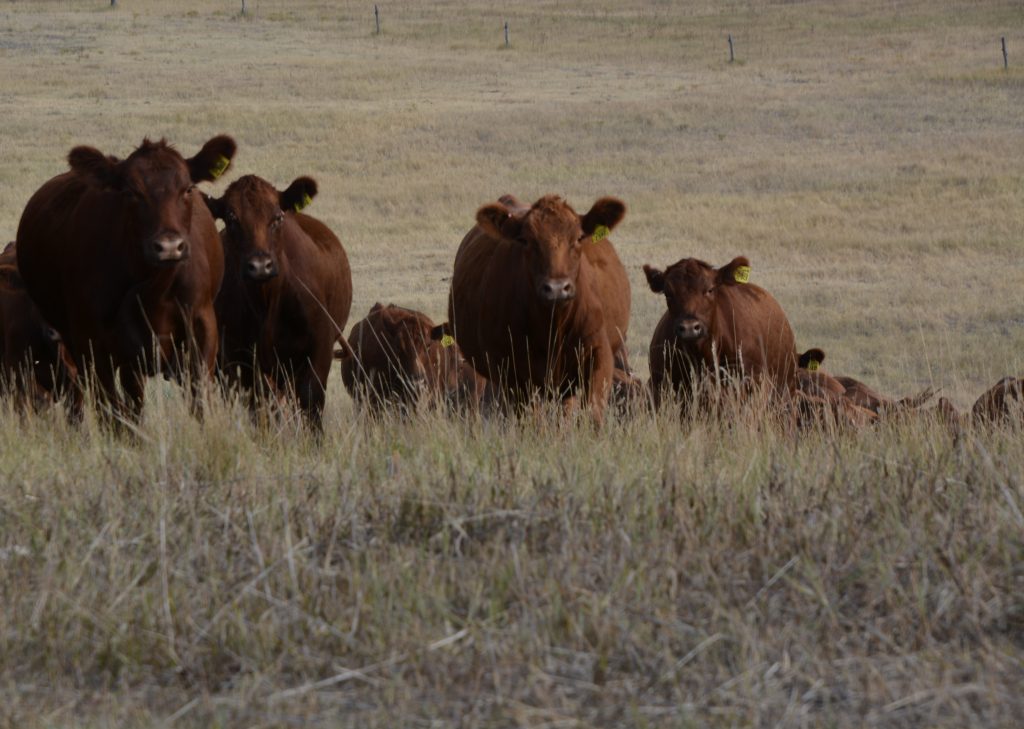
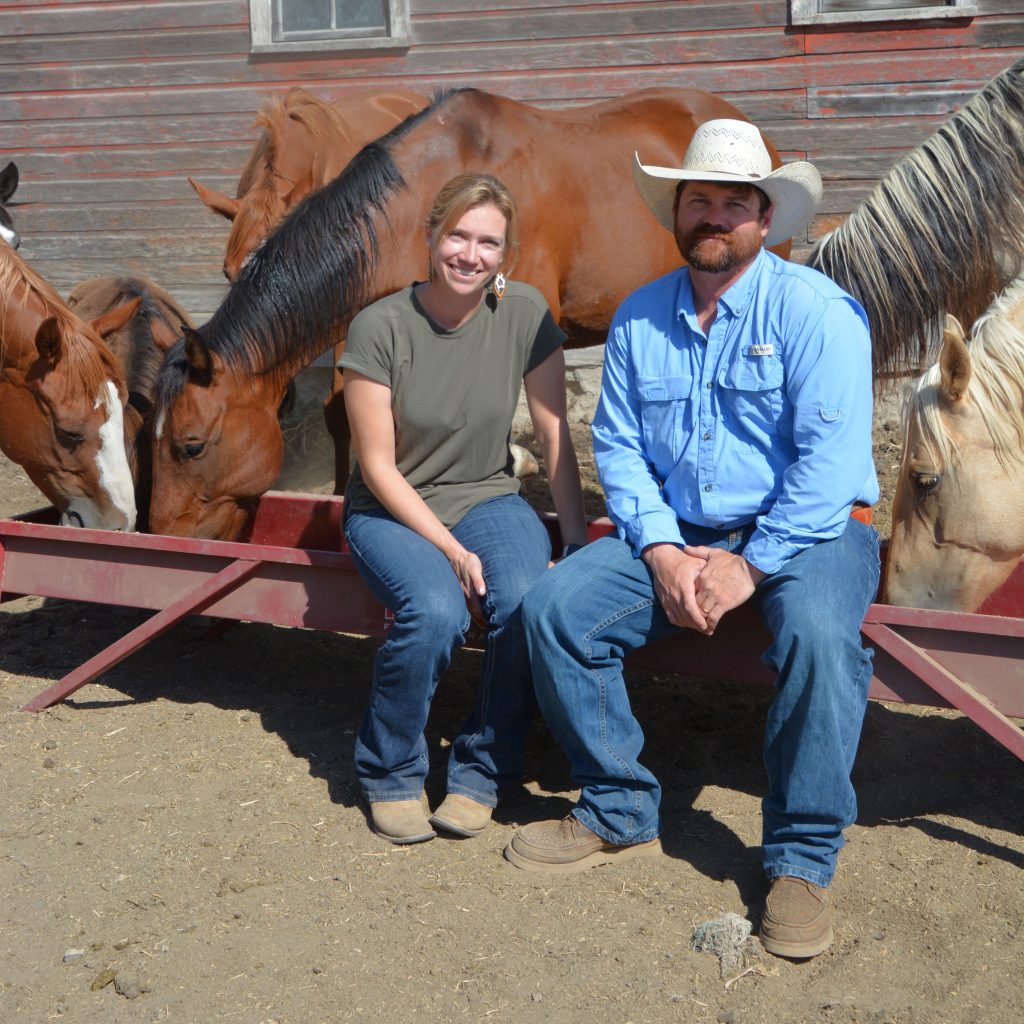
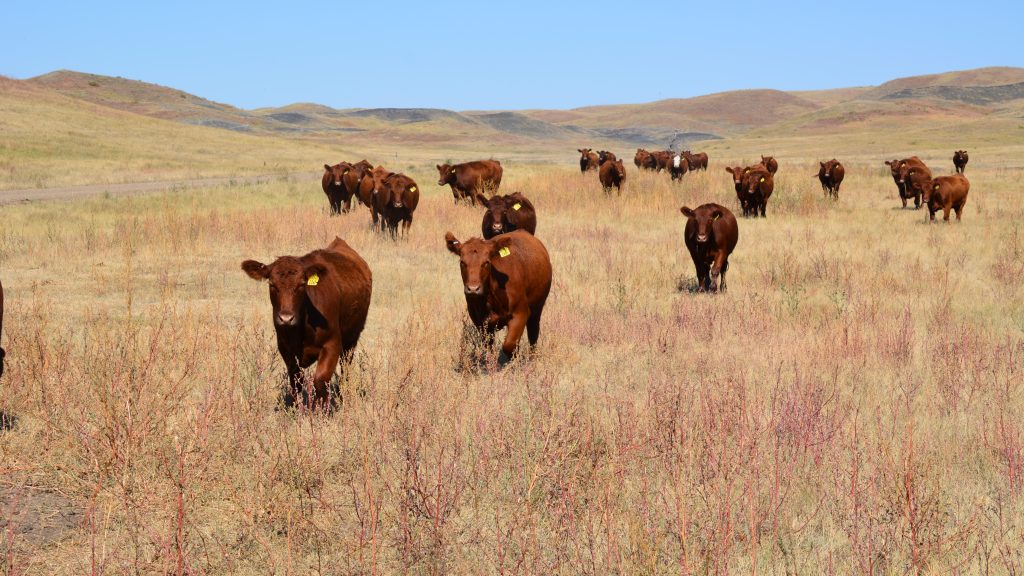
Returning home
Both Bryan and Amber’s families have deep roots in Lyman County.
Amber’s dad, Warren Hammerbeck, grew up on a cattle operation near Iona. And Bryan’s great-grandparents homesteaded near Hamill.
While Bryan’s dad, Mike, built his life and raised Bryan and his siblings on the family’s Reliance crop and cattle operation – Amber’s dad left home to build a career off the ranch as a chemical salesman, finishing out his career in northeastern Colorado.
“I was raised by someone who escaped production agriculture,” Amber explained. “My dad’s parents were products of the Great Depression, and they always struggled. My dad helped his parents pay for the ranch over and over again.”
Because of her dad’s experience, it was difficult for Bryan to convince Amber to return to his family’s operation when his grandma, Skip Bunker, gave him the opportunity in 2014 to run some cattle on her land.
Although she was hesitant, Amber knew it was an opportunity they should not pass up.
“When an opportunity like that knocks, you answer the door,” Amber said.
At the time the couple’s oldest children, Evelyn and Si, were 5 and 2. And returning home to raise cattle was always Bryan’s dream.
“I always liked caring for livestock, so the idea of riding horse every day and caring for cattle and cowboying – it is what I always wanted to do,” he said.
At the time, his grandma, dad and uncle ranched together, but it didn’t take too long to realize that the family operation was not large enough to support four families.
This is when another opportunity presented itself.
“Randy Holmquist found out I was home and asked me if I wanted to lease his place,” Bryan said.
Bryan grew up with Randy’s son, Tyler. So, Bryan understood Randy’s grassland management practices.
Bryan was eager for the opportunity to expand their herd. Again, Amber was hesitant. Although she aligned with Randy’s land stewardship goals, the finances of ranching concerned her.
To help convince her to take on the financial risk, Bryan created profit and loss spreadsheets.
“I told him, if you want to buy more cows, prove to me that we can make it. Show me how it will work,” Amber explained. “He put it all into an Excel spreadsheet and I grilled him. He was able to show me that he thought of all scenarios. So, I said, ’OK on one condition. If we are not making money in three years, we need to sell.’”
The couple made a pact. They signed a three-year lease and Bryan and their son, Si, went to the sale barn to buy cows.
“It was a big day,” Bryan said.
At first things went well. Together the couple enrolled in beefSD a two-year seminar offered by SDSU Extension designed to expose cattle producers to opportunities and information to help them remain profitable.
As a couple, they enjoy working together on the ranch. Amber puts her grassland management knowledge to work while Bryan takes care of the herd.
“Amber takes care of all that is below ground, and I do all the above ground,” Bryan said. “She tells me how to manage the grass from a conservationist standpoint and I use the cows to implement what she tells me.”
By paying attention to the grassland health and intentionally moving cattle, Amber explained they are able to continue the Holmquist legacy of grassland stewardship, control weeds and increase species diversity.
“Cattle are part of this ecosystem,” Amber said. “The way these native grasses grow, they are triggered by use, how much root mass they put down and biomass they shoot up and whether or not they will go to seed.”
In 2018, there was a drought and as Bryan puts it, “the cattle market tanked.”
True to their pact, the couple knew they needed to sell their herd. But thankfully, this did not mean they had to leave the life they both valued. They had options.
A year earlier, they had been visiting with a beefSD speaker about options and he asked them, “do you have any grass?”
“We looked at each other, other than cattle, all we raise is grass,” Amber said.
The speaker shared with them something they already knew but didn’t think to capitalize on – due to high commodity prices and many marginal acres returning to crop production, there were plenty of cattle producers looking for grass.
Within a few months of selling their herd, they took in their first truckloads of pairs for custom grazing.
“Today, I would call us grass farmers. We grow grass for ranchers to have their cows on,” Amber said.
Bryan added, “we treat these cattle as if they were our own. They drop them off and know I will take care of the rest. I ride through them a couple times a week.”
When he checks cattle, Bryan prefers riding horse because he feels horses are the lowest stress option for cattle and also horseback riding is a stress-relief for him as well.
“Riding horseback is my therapy for PTSD (post-traumatic stress disorder),” Bryan explained. “There are times when Amber will say, ‘you need to go for a ride.’”
Ensuring Bryan takes care of his mental health following his year of combat is intentional. Bryan’s best friend, Laird, lost his life due to the effects of PTSD.
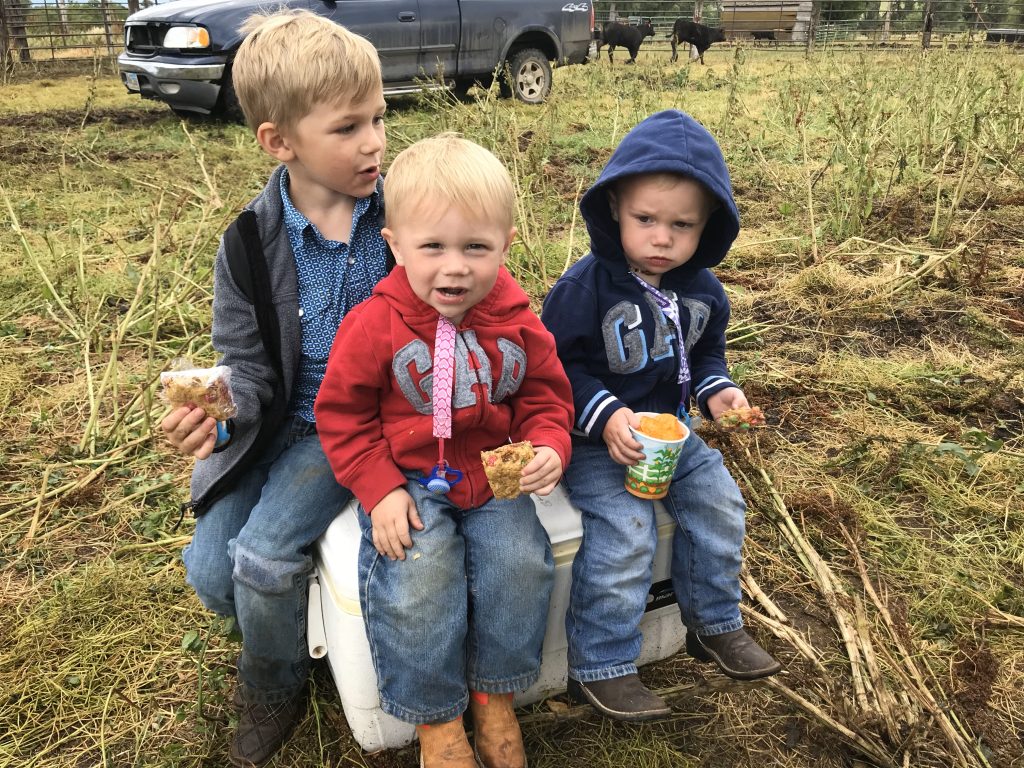
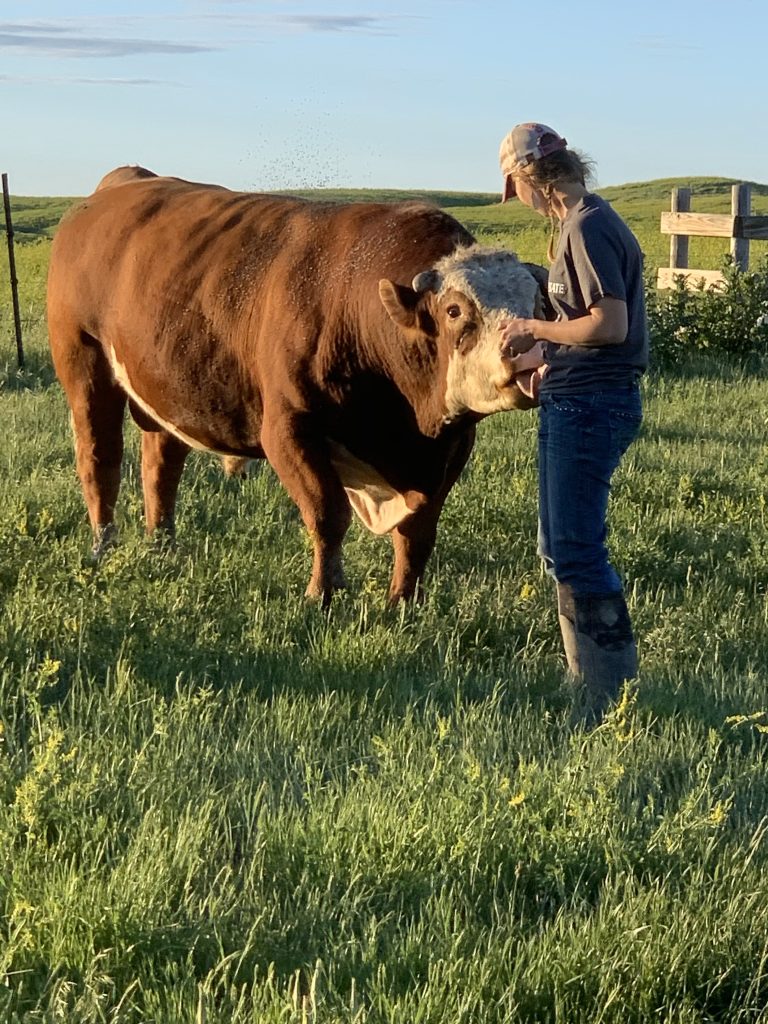
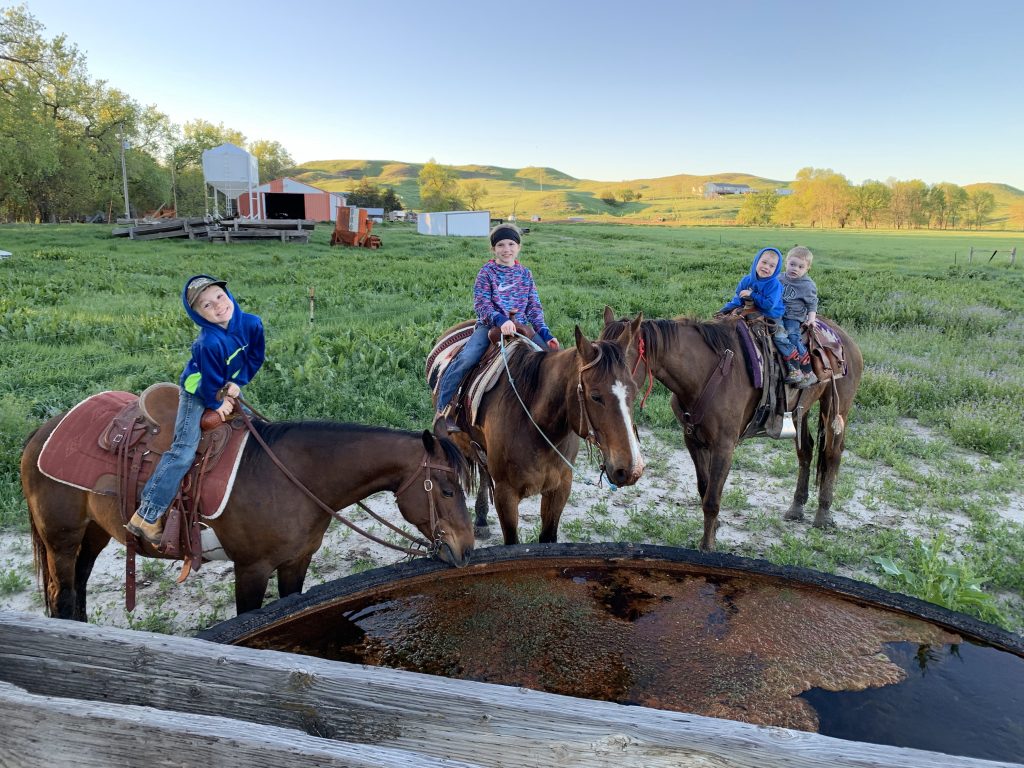
Making an impact
When Amber reflects on her childhood career goal, she is happy with where she is today – as a professional, wife and mom.
“This is a good place to raise our kids. They have space to breathe and they know what it is to be responsible,” Amber said.
Bryan added, “If they don’t feed something, it could die, and they learn about life and death.”
Once the couple’s youngest children, twins Roy and Laird, were old enough for elementary school, Amber began putting her degree to work off the ranch, working as a District Conservationist for the Natural Resources Conservation Service.
“On the grass pasture that we lease, I know we are making an impact on 4,500 acres,” Amber said. “With my NRCS job, I get to help other people help the land. Like I said, I’m a conservationist at heart.”
In fact, a few years back, it was Amber who convinced Bryan that the ranch was where they needed to stay.
“It was the 2019 calving season and I had 28 bucket calves. I was sick with cryptosporidium and C. diff. The White River flooded and took out a fence we had just put in. It seemed like nothing was going right,” Bryan recalled.
“I always play the long game. I said, let’s do this one more year,” Amber said. “Here, I was the person who said we didn’t need to be here to begin with, but now we were here. Our kids are safe here. We have our village. I told Bryan, I don’t want to rebuild a village.”
When the couple talks about their village, it extends beyond their family and friends in the community of Reliance – they include the cattle producers who trust them to care for their cattle.
“We are willing to work with our producers on rates. I have had some say I could charge more, but I remind them that if they don’t make money, I won’t make money,” Bryan said. “And their feedback that their yearlings are more calm after spending time on grass with us, or that their cattle look great makes me feel good.”

